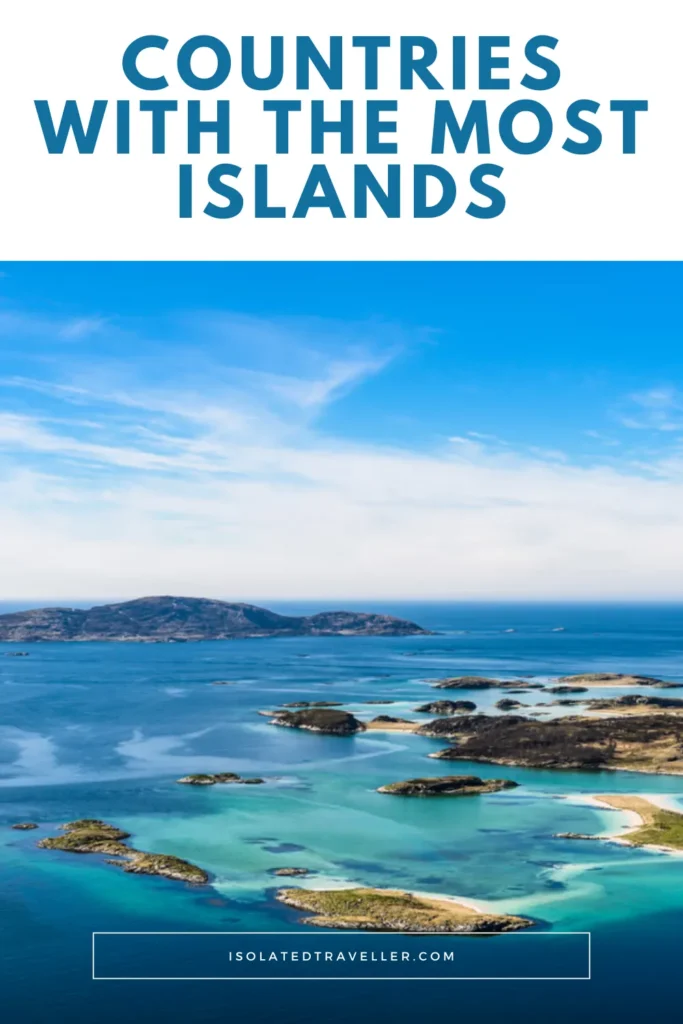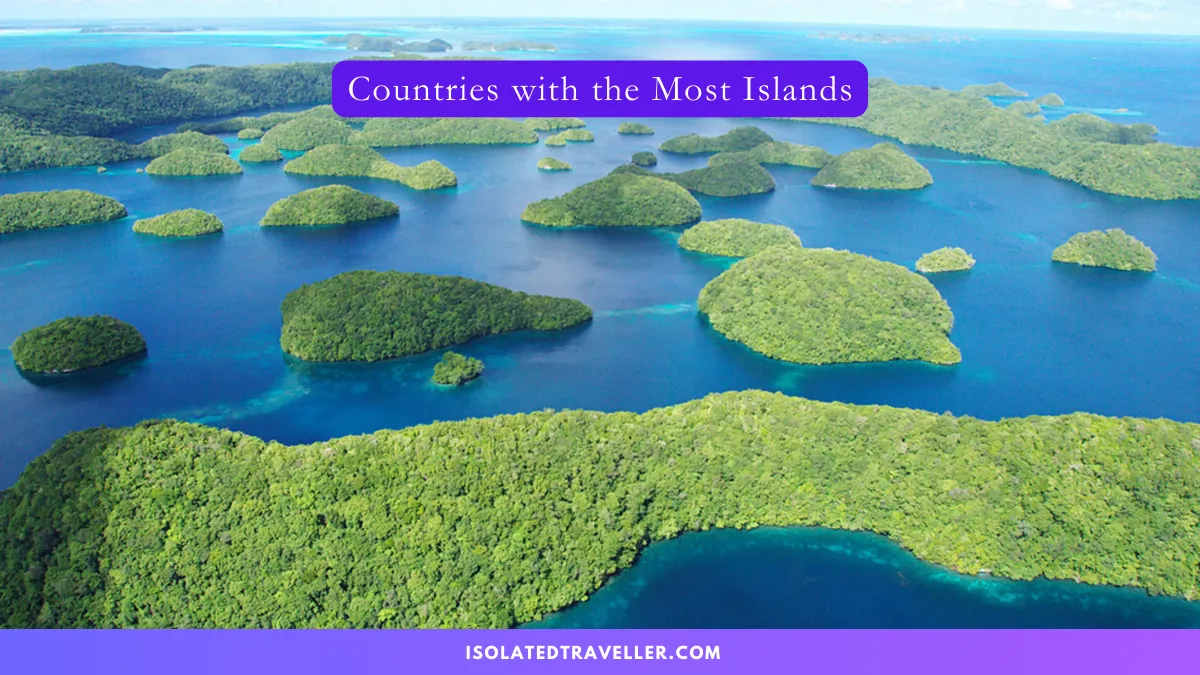From the rugged fjords of Scandinavia to the sun-drenched archipelagos of Southeast Asia, some nations are defined as much by their islands as by their mainland.
Sweden claims the crown with over 267,000 islands dotting its lakes and Baltic Sea, followed closely by Norway’s dramatic skerries and Finland’s labyrinthine archipelagos. Beyond northern Europe, Canada’s Arctic and coastal isles, Indonesia’s sprawling tropical chains and Japan’s remote atolls each contribute to a fascinating global tally.
Exploring these island-rich countries reveals not only diverse landscapes and ecosystems, but also unique cultural tapestries shaped by centuries of maritime life.
What is an island?
An island is a piece of land entirely surrounded by water. It may sit in oceans, seas, lakes or rivers and can arise through tectonic uplift, volcanic activity, coral growth or sediment deposition. Islands often host unique ecosystems and cultures, their isolation fostering distinct plant and animal life as well as human traditions.
List of Countries with the Most Islands
| Country | Number of Islands |
|---|---|
| Sweden | 267 570 |
| Norway | 239 057 |
| Finland | 178 947 |
| Canada | 52 455 |
| United States | 18 617 |
| Indonesia | 17 504 |
| Japan | 14 125 |
| Australia | 8 222 |
| Philippines | 7 641 |
| Chile | 5 000 |
1. Sweden: 267,570 Islands
Sweden sits firmly at the top with a staggering 267,570 islands, most of them tiny, forest-clad islets scattered across freshwater lakes and the Baltic Sea. Fewer than 1,000 are inhabited, making it a paradise for intrepid explorers seeking solitude.
2. Norway: 239,057 Islands
Norway’s dramatic coastline—punctuated by fjords, rugged skerries and Arctic archipelagos like Svalbard—accounts for 239,057 islands. Despite the high count, only a handful host permanent communities, underscoring the country’s wild, untamed beauty.
3. Finland: 178,947 Islands
Finland’s lake-rich interior and archipelagos in the Baltic Sea give it 178,947 islands. Many are clustered around Åland, creating one of the world’s largest continuous archipelago systems and offering endless routes for sailing and kayaking.
4. Canada: 52,455 Islands
From the Arctic’s icy realms to the Pacific’s temperate rainforests, Canada boasts 52,455 islands. Highlights include the Thousand Islands in the St Lawrence River and remote outposts in Nunavut, perfect for wildlife-spotting and polar adventures.
5. United States: 18,617 Islands
The US islands tally of 18,617 spans Alaskan islets, the Florida Keys, the Hawaiian archipelago and Pacific territories such as Guam. Diversity reigns, from volcanic landscapes to coral cays rich in tropical marine life.
6. Indonesia: 17,504 Islands
Indonesia, the world’s largest archipelagic state, encompasses 17,504 islands. Bali, Sumatra, Java and countless lesser-known isles beckon with active volcanoes, lush jungles and vibrant cultural traditions.
7. Japan: 14,125 Islands
A 2023 remapping effort boosted Japan’s official count to 14,125 islands. Beyond Honshu and Hokkaido lie remote chains like the Nansei and Ogasawara archipelagos, each offering its own unique history and ecosystem.
8. Australia: 8,222 Islands
Often thought of as a continental landmass, Australia’s offshore territories—from Tasmania to the Torres Strait—total 8,222 islands. Coral cay formations on the Great Barrier Reef and secluded atolls in the Indian Ocean await adventurous divers and sailors.
9. Philippines: 7,641 Islands
With 7,641 islands, the Philippines is one of the world’s most archipelagic nations. Over 2,000 are inhabited, showcasing a blend of Spanish, American and indigenous influences alongside pristine beaches and biodiverse coral reefs.
10. Chile: 5,000 Islands
Chile’s fjord-cut southern coast hides around 5,000 islands, many in Patagonia’s remote wilderness. Glacially carved channels and abundant wildlife make this a dream destination for expedition-style cruising
FAQ
Q: Which country has the most inhabited islands?
Although Sweden has the most islands overall, Indonesia leads in inhabited isles, with thousands of communities spread across its archipelagos.
Q: How are islands counted?
Definitions vary: some nations count any landmass above high-tide level, others set minimum area or coastline length criteria. Advanced GIS mapping continues to refine these numbers.
Q: Can I visit all these islands?
Logistics and accessibility differ greatly. Nordic countries offer well-maintained ferry networks, while tropical archipelagos may require private charters or specialised tour operators.


